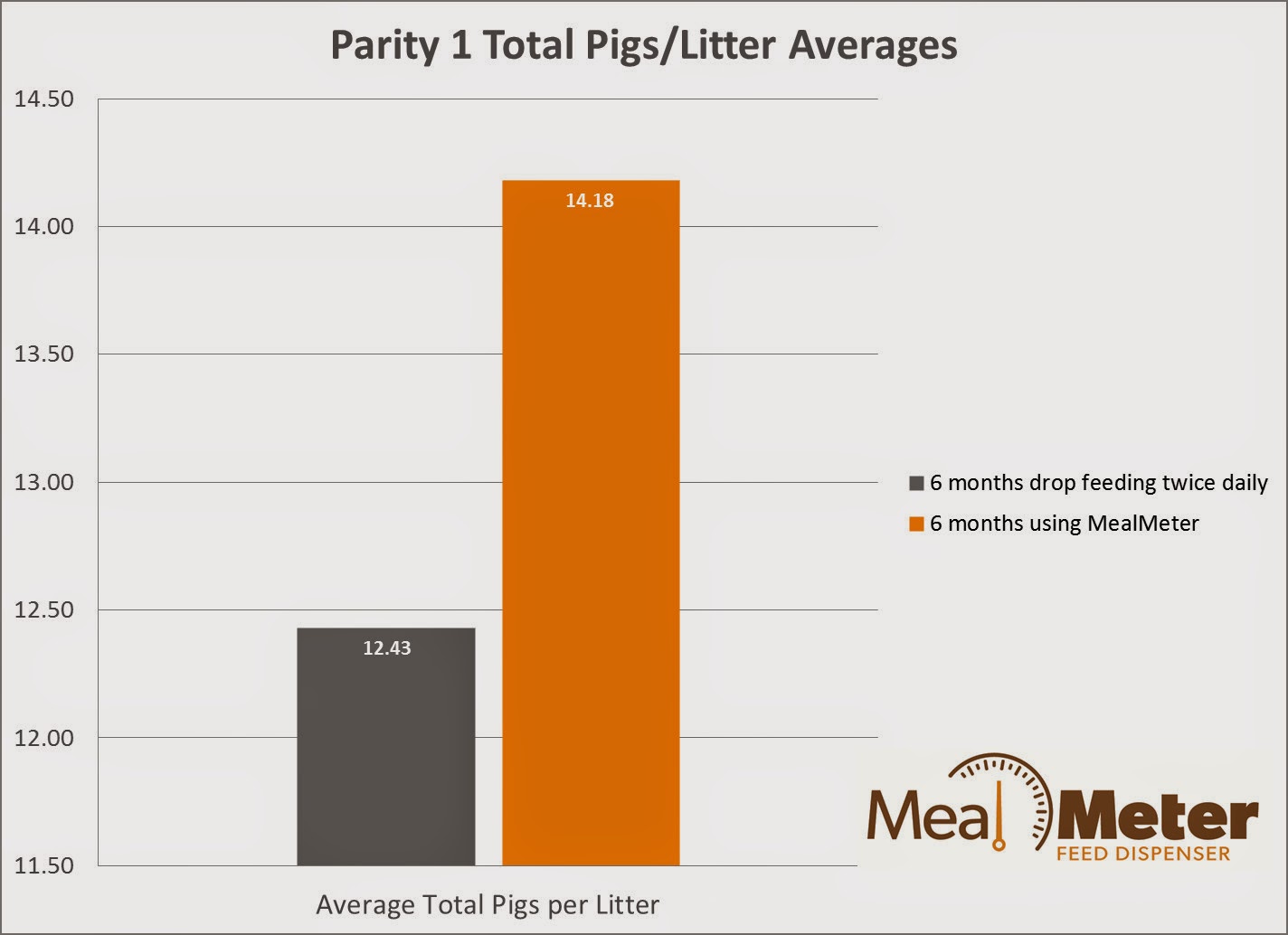Dave’s awakening occurred a few years ago at a regional boot
camp offered by his genetics company.
There, the presenter discussed the importance of gilt development. He said gilts are significant because the
size of their first litter can define their lifetime litter size, yet gilts
represent quite a challenge in many ways.
First, gilts need to be of ideal age, weight and condition
when bred to achieve optimal performance.
In order to accomplish this, feed intake must be maximized.
However, gilts experience a lot of changes prior to breeding
as they are moved from an isolation barn to a breeding barn. It often takes gilts a week to get back to
full feed after being moved, which is a week of limited intake days.
No producer wants to limit feed their gilts. But the conundrum turns into either the
producer wastes feed attempting to maximize feed intake or they set the boxes
back to save feed, which essentially limits the gilt until they are “used to
their new surroundings.”
After the presentation, Dave spent a lot of time
watching. He would observe gilts
entering the crate and would watch as they consumed (or didn’t consume) their
feed in the mornings and afternoons. In
the evenings, he would venture back over to the gestation barn to watch the
gilts and see if activity was any different.
Dave observed gilts aren’t stressed over the crate. They seemed to respond well to their
individual maternity pen. However, he
did notice the gilts would get up at various times ready to eat, but the feed
would be washed down the trough from the watering system or was no longer fresh
as they would prefer it.
Then it came to Dave; the isolation barns and breeding barns
have very different feeding systems.
Isolation barns or finishing barns have self-feeders, which allow young
gilts to eat small amounts through the day.
Individual maternity pens drop large amounts of feed into a trough one
to two times a day and the gilt is expected to consume it in a certain amount
of time before water washes it away or it becomes stale. As
Dave puts it, “We’re expecting our gilts to eat like sows.”
 |
| MealMeter prototypes Dave tried out in his breed row. |
The wheels began to turn and prototypes were created. After coming up with a working design, Dave
put what is now called the MealMeter in front of his entire gilt row. His theory proved correct. Instead of taking days to get back to full
feed, gilts quickly consumed their ration when they could decide when they
wanted to eat. He was on to something.
His production numbers told the same story. Before, he was in the bottom half of his
contemporary group for P1 production, even with a solid breeding team whose
conception rates are excellent. Six
months of using the MealMeter shot his numbers up to one of the top in P1 total
born. There were no other changes to
breeding and management.
 |
| Dave's 6 month averages before and after installing the MealMeter. |
What is so exciting is P1 total born rate is just one benefit to consider. Aside
from obvious feed savings, think about what starting gilts off well can do for
the entire herd. For instance, Dave
significantly reduced his replacement rate because now that his gilts begin
well, they stay in the herd much longer.
Ron Ketchem and Mark Rix from Swine Management Services, LLC
wrote in the recent article ‘Does gilt performance dictate farm success’ that
not only does the farrowing rate of gilts correlate to the farrowing rate for
the whole farm, but also in the amount of repeats, total born, and wean to 1st
service intervals. “(Top farms) have figured out that gilts drive the farm now
and in the future. Most have invested in
good genetics, have gilt-developing facilities on the farm or close by and have
added labor to take care of the gilts from entry to breeding.”
Yes, gilts take more management and attention, but if you
start them off right, the benefits are far reaching.
Listen to Dave tell the story here:
Until next time,
Katie

No comments:
Post a Comment